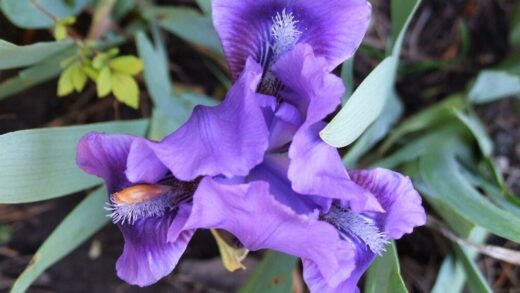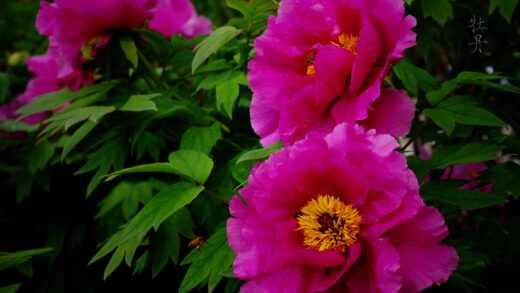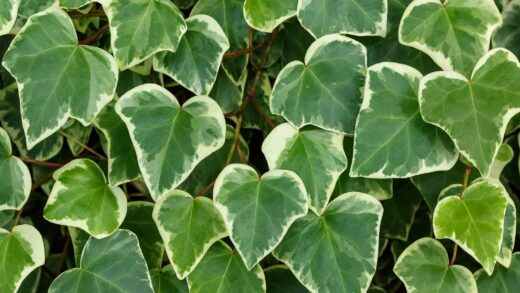Sea thrift is widely celebrated for its robust health and general resistance to common garden ailments. Its tough, leathery foliage and preference for dry, sunny conditions make it an inhospitable environment for many of the fungal diseases and pests that plague more delicate perennials. However, no plant is entirely immune to problems, and under certain suboptimal conditions, sea thrift can fall victim to a few specific issues. The vast majority of these problems are directly linked to environmental factors, most notably poor drainage and inadequate air circulation, making prevention through proper siting the most effective form of defense.
The most significant threat to the health of sea thrift is not a pest or a disease in the traditional sense, but rather a physiological condition: root and crown rot. This issue arises when the plant is situated in soil that remains wet and waterlogged for extended periods. The roots are deprived of oxygen and begin to decay, creating an entry point for common soil-borne fungi. Symptoms include a cessation of growth, yellowing or browning of the foliage, and a soft, mushy crown at the base of the plant. By the time these symptoms are obvious, the damage is often irreversible.
Fungal diseases, while uncommon, can occasionally appear, particularly in humid climates or during unusually wet seasons. Rust is one such possibility, presenting as small, orange-brown pustules on the undersides of the leaves. While generally not life-threatening, a severe infection can reduce the plant’s vigor and mar its appearance. The best preventative measures are ensuring the plant is not overcrowded and has excellent air circulation to allow the foliage to dry quickly after rain.
Pest infestations are rare on sea thrift. The texture and composition of its leaves seem to be a natural deterrent for many common garden pests like slugs and snails. Aphids may occasionally colonize the tender flower stems or new growth, especially on plants that have been weakened by over-fertilization, which produces softer, more palatable tissues. However, these infestations are typically minor and easily managed, underscoring the plant’s overall resilience in the face of common garden adversaries.
Fungal diseases and prevention
While sea thrift is generally resistant to diseases, the most prevalent issue it can face is rot affecting the crown and roots. This is primarily a cultural problem caused by excess moisture rather than a specific, aggressive pathogen. Pathogens such as Phytophthora or Pythium are often present in garden soil but typically only attack plants that are already stressed and weakened by waterlogged conditions. Prevention is therefore entirely focused on providing the sharp drainage this plant demands. Planting in sandy or gravelly soil, or in raised beds, is the most effective preventative strategy.
More articles on this topic
In regions with high humidity or during extended periods of rain, other fungal issues like rust (Puccinia species) can sometimes occur. Rust appears as small, raised spots, or pustules, that are typically orange, brown, or yellow, usually on the undersides of the leaves. To prevent rust, ensure good spacing between plants to promote air circulation, which helps the foliage dry off quickly. Watering at the base of the plant rather than overhead can also help keep the leaves dry and less susceptible to fungal spore germination.
If you do notice signs of a fungal disease like rust, the first step is to remove and destroy the infected leaves immediately to limit the spread of the spores. For a minor infection, this may be all that is needed. In more persistent cases, a fungicide may be considered, but this should be a last resort. Prioritizing cultural controls like improving air circulation and ensuring the plant is in a sunny, open location will be far more effective in the long term than relying on chemical treatments.
Another preventative measure involves a yearly cleanup of the plant. In late winter or early spring, gently comb through the evergreen foliage with your fingers to remove any dead leaves and debris that have accumulated at the base of the clump. This debris can trap moisture and create a damp microclimate around the crown that is ideal for fungal growth. This simple act of sanitation improves airflow through the center of the plant and is a key part of maintaining its health.
Common garden pests
Sea thrift’s tough, grass-like foliage makes it unappealing to many of the most common garden pests. Slugs and snails, for instance, will almost always ignore it in favor of more succulent, tender-leaved plants like hostas or delphiniums. Similarly, chewing insects like caterpillars rarely cause any significant damage. This natural resistance is one of the plant’s most appealing qualities for gardeners seeking low-maintenance options.
More articles on this topic
The most likely pest you might encounter on sea thrift is the aphid. These small, sap-sucking insects may occasionally form colonies on the softest parts of the plant, which are typically the new flower stalks and the flowers themselves. Aphid infestations are more common on plants that are stressed, particularly those that have been over-fertilized with nitrogen, as this produces the soft, sappy growth that they prefer. A healthy plant in lean soil is much less likely to attract a significant aphid population.
Managing aphids on sea thrift is usually straightforward. For a small number of pests, a strong jet of water from a garden hose is often enough to dislodge them from the plant. This method is effective and avoids the use of chemicals. If the infestation is more widespread, an application of insecticidal soap can be used. Be sure to spray thoroughly, covering all surfaces of the plant, including the undersides of the foliage and the flower stems where the aphids congregate.
In very rare instances, other sap-sucking insects like spittlebugs might appear, identified by the frothy “cuckoo spit” they produce on the plant’s stems. Like aphids, they cause minimal damage and can be easily washed off with a jet of water. Overall, pest problems on sea thrift are the exception rather than the rule, and their presence may indicate an underlying cultural issue, such as over-fertilization or a lack of sunlight, that is weakening the plant’s natural defenses.
Environmental stress factors
Environmental stress is a more significant threat to sea thrift than either pests or diseases. The primary stressor is “wet feet,” or soil that does not drain properly. This leads to the anaerobic conditions that cause root suffocation and decay. This single factor is responsible for the majority of sea thrift failures in garden settings. Choosing the right site and amending heavy soils with grit is not just a recommendation; it is essential for the plant’s survival.
Insufficient sunlight is another major environmental stressor. Sea thrift is a full-sun plant, and when grown in partial shade, it will struggle. The lack of direct sunlight leads to weak, etiolated (stretched) growth, a sparse, open habit, and a dramatic reduction in flowering. A light-starved plant is also more susceptible to secondary problems like fungal diseases because the foliage stays damp for longer and the plant’s overall vigor is compromised.
Extreme heat combined with high humidity can also be stressful for sea thrift, even though it is a sun-loving plant. While it is tolerant of heat and drought, the addition of persistent humidity can create an environment conducive to fungal growth around the plant’s dense crown. This is another reason why excellent air circulation is so important. In hot and humid climates, spacing plants generously and avoiding overhead watering become even more critical practices for maintaining plant health.
Finally, competition from more vigorous, neighboring plants can be a source of stress. Sea thrift is a relatively small, slow-growing plant that can easily be overwhelmed and shaded out by larger, more aggressive perennials or encroaching weeds. When planting, ensure it is given enough space and that its companions have similar growth habits. Regular weeding around the base of the plant is also important to ensure it is not being robbed of light, water, and what few nutrients it requires.
Diagnosing common problems
When your sea thrift appears unhealthy, a systematic approach to diagnosis can help you identify the root cause. The first thing to examine is the foliage. Are the leaves yellow? Yellowing leaves can be a symptom of overwatering, which is the most likely culprit. Check the soil moisture; if it is damp or wet, you have likely found your problem. Yellowing can also, in rare cases, indicate a nutrient deficiency, but this is far less common and would typically occur in very poor, sandy soil where the plant has been growing for many years.
If the plant is wilting, differentiate between wilting from underwatering and wilting from root rot. A wilted plant in bone-dry soil likely just needs a deep drink of water. However, a wilted plant in moist or wet soil is a strong indicator of root rot. In this case, the roots are damaged and can no longer absorb water, causing the plant to wilt even though moisture is present. Gently tug on the base of the plant; if it feels loose or the crown is mushy, root rot is almost certain.
Look for a lack of flowers. If a mature sea thrift plant that is receiving at least six hours of direct sun fails to bloom, the most probable cause is excessive soil fertility. Have you recently top-dressed the area with compost or applied a lawn fertilizer nearby that might have reached the plant? An excess of nitrogen is the number one reason for a sea thrift plant to produce lush foliage but no flowers. The solution is to cease all fertilization and allow the nutrients to leach out over time.
Finally, inspect the plant for any visible pests or signs of disease. Check the stems for aphids and the undersides of the leaves for the orange pustules of rust. As noted, these are less common issues but should be ruled out. By carefully observing the plant’s symptoms and considering the environmental conditions—drainage, sunlight, and soil fertility—you can accurately diagnose most problems and take the appropriate corrective action, which usually involves adjusting the cultural care rather than applying a chemical treatment.
Maintaining plant vigor
Maintaining the long-term vigor of sea thrift involves a proactive approach centered on providing the right conditions and performing a few key maintenance tasks. The foundation of a vigorous plant is its location. A site with full sun and fast-draining, lean soil will allow the plant to grow strong and healthy, naturally resisting most pests and diseases. If these initial conditions are met, the plant will require very little intervention to thrive for years.
The practice of deadheading spent flowers is crucial for maintaining vigor during the growing season. By removing the old flower heads, you prevent the plant from wasting energy on seed production and instead encourage it to channel that energy into producing more blooms and strengthening its root system. This simple task keeps the plant looking tidy and can significantly prolong its flowering period, contributing to its overall vitality.
Over time, even a healthy sea thrift clump can lose vigor as the center becomes old and woody. Rejuvenating the plant through division every three to five years is the key to maintaining its long-term health and performance. This process removes the unproductive central core and allows you to replant the young, vigorous outer sections. This not only revitalizes your plant but also provides you with new plants to expand your collection or share with others.
Lastly, an annual cleanup in early spring helps maintain vigor. Removing dead leaves from the dense clump improves air circulation to the crown, which is vital for preventing rot. This also tidies up the plant’s appearance and makes way for the flush of new spring growth. By combining these simple cultural practices—proper siting, deadheading, periodic division, and an annual cleanup—you can ensure your sea thrift remains a vigorous and beautiful feature in your garden for many years.




















